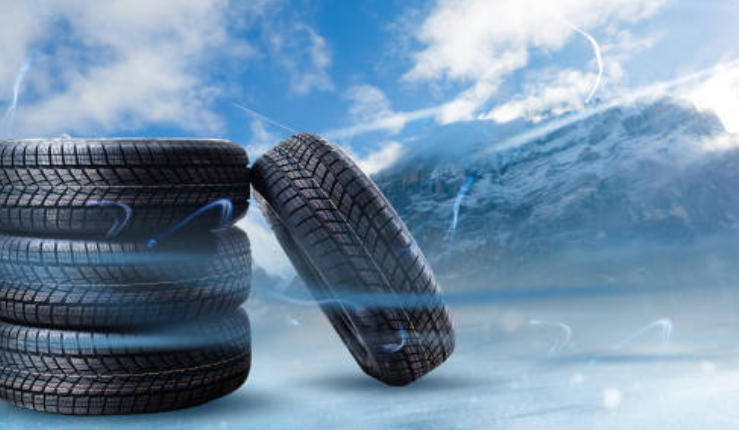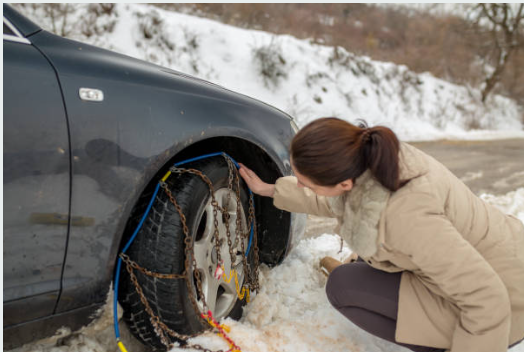Tire maintenance is vital for safety and performance, particularly in changing weather. Hot weather can lead to overinflated tires, causing uneven wear and blowout risks. Cold weather can decrease tire pressure, affecting traction. If you’re wondering where to find used tractor tires for free near me, it’s worth considering as an option for budget-conscious individuals. Regularly check and adjust tire pressure, following cold weather recommendations. Proper tread depth is essential for icy or snowy conditions. By maintaining pressure, checking tread depth, and inspecting for wear, drivers ensure tire performance in varying weather conditions.
Tire Care In Hot Weather
Tire care is essential in maintaining the optimal performance and safety of your vehicle, especially in hot weather conditions.

To ensure proper tire care, it is crucial to check tire pressure regularly as high temperatures can cause tire pressure to increase.
Avoiding overloading your vehicle and keeping tire pressure at recommended levels are important practices to prevent excessive heat build-up and potential tire damage.
Check Tire Pressure Regularly
To ensure optimal tire performance in varying weather conditions, it is crucial to regularly monitor and adjust tire pressure. Tire pressure plays a significant role in maintaining traction, stability, and fuel efficiency. In hot weather, tire pressure tends to increase due to the expansion of air molecules inside the tire. This can lead to overinflated tires, which can cause uneven wear, reduced grip, and a harsher ride.
Avoid Overloading Your Vehicle
One important consideration for vehicle owners is avoiding the overloading of their vehicles. Overloading a vehicle can have a significant impact on tire care, especially in different weather conditions.
When a vehicle is overloaded, the weight distribution becomes uneven, and this can lead to increased stress on the tires. In hot weather, the excessive weight can cause the tires to overheat and increase the risk of a blowout. Similarly, in cold weather, the added weight can affect the tire’s ability to maintain traction on icy or snowy roads.
Therefore, it is crucial for vehicle owners to be mindful of their vehicle’s maximum load capacity and ensure they do not exceed it to prevent tire damage and potential accidents.
Keep Tire Pressure At Recommended Levels
Maintaining the appropriate tire pressure is essential for optimal vehicle performance and safety. The tire pressure directly affects various aspects of the tire’s performance, including its ability to grip the road, provide stability, and distribute the vehicle’s weight evenly.
When the tire pressure is too low, the tire tends to flex more, resulting in increased rolling resistance and decreased fuel efficiency. This can also lead to overheating and premature wear of the tire.
Tire Care In Cold Weather
This paragraph discusses key points for tire care in cold weather.

The first point is to use winter tires, which are designed to provide better traction and handling in cold and icy conditions.
The second point is to avoid high speeds, as cold weather can decrease the flexibility of the tire rubber, leading to reduced grip on the road.
Lastly, it is important to avoid overloading your vehicle, as this can put excessive strain on the tires and increase the risk of tire failure in cold weather conditions.
Continue Exploring: Tire Buying Guide: Factors To Consider
Use Winter Tires
Winter tires are essential for ensuring optimal traction and handling in cold and snowy weather conditions. These specialized tires are designed with a unique tread pattern and rubber compound that is engineered to provide superior grip on icy and snowy surfaces.
The tread pattern of winter tires features deep grooves and small slits called sipes, which help to channel away water, slush, and snow, reducing the risk of hydroplaning. The rubber compound used in winter tires is also formulated to remain flexible in freezing temperatures, allowing the tire to maintain its grip on the road.
Avoid High Speeds
To ensure optimal safety and performance on the road, it is advisable to moderate one’s speed during cold and snowy weather conditions.
Cold weather can significantly affect tire performance, reducing their grip and traction on the road. When driving at high speeds, especially on icy or snow-covered surfaces, the chances of losing control of the vehicle and experiencing a skid or a slide increase. By reducing speed, drivers can mitigate the risks associated with these weather conditions and maintain better control over their vehicles.
Avoid Overloading Your Vehicle
Overloading a vehicle during cold and snowy weather can significantly compromise its stability and increase the risk of accidents. When a vehicle is overloaded, the weight distribution becomes uneven, putting excessive strain on the tires. This can lead to poor traction and control, especially in slippery conditions.
The added weight also puts extra pressure on the tires, causing them to wear out faster and leading to blowouts. Therefore, it is crucial to avoid overloading your vehicle in order to maintain optimal tire performance and ensure your safety on the road.
In cold weather, overloading a vehicle can have even more detrimental effects on tire performance. Cold temperatures cause the air inside the tires to contract, reducing tire pressure. When a vehicle is overloaded, the tires already have to bear a heavier load, and the reduced tire pressure further exacerbates this strain.
Underinflated tires have less grip and are more prone to skidding, especially on icy or snowy surfaces. Low tire pressure can cause uneven tire wear, reducing the longevity of the tires and leading to costly replacements. Therefore, it is essential to avoid overloading your vehicle in cold weather to maintain proper tire pressure and ensure optimal traction and control.
Tire Care In Rainy Weather
This paragraph will discuss the tire care in rainy weather, focusing on three key points: checking tire pressure regularly, avoiding high speeds, and keeping tires clean.

It is important to regularly check tire pressure in rainy weather as low pressure can affect the tire’s grip and performance on wet surfaces.
It is recommended to avoid high speeds to reduce the risk of hydroplaning and improve traction.
Lastly, keeping tires clean from debris and mud is essential to maintain optimal performance and prevent potential damage.
Check Tire Pressure Regularly
Regularly monitoring tire pressure is essential for maintaining optimal performance and ensuring safety in various weather conditions. Adequate tire pressure is crucial as it affects the tire’s grip on the road, handling, and overall performance.
In different weather conditions, such as rain, tire pressure plays a significant role in preventing hydroplaning and maintaining stability. When tire pressure is too low, there is an increased risk of hydroplaning as the treads cannot effectively displace water from the road surface. This reduces traction and can lead to loss of control of the vehicle. Overinflated tires can cause reduced contact with the road, resulting in less grip and compromised handling, especially in wet conditions.
Avoid High Speeds
To optimize safety and enhance driving performance, it is recommended to maintain a moderate speed while operating a vehicle. High speeds can have a detrimental impact on tire performance, especially in different weather conditions.
When driving at high speeds, the heat generated by the friction between the tire and the road surface increases significantly. This can lead to excessive heat buildup in the tire, which can cause the rubber to degrade and weaken. As a result, the tire’s grip on the road compromised, increasing the risk of accidents, especially in wet or snowy conditions.
Keep Tires Clean
Maintaining cleanliness on your tires is crucial to ensure optimal performance and safety while driving. Dirt, mud, and debris can accumulate on the surface of the tires, affecting their grip and traction on the road. This can lead to decreased handling capabilities, longer stopping distances, and an increased risk of accidents. Therefore, it is essential to regularly clean your tires to remove any contaminants and maintain their effectiveness.
One of the main reasons to keep your tires clean is to prevent the buildup of dirt and debris. When dirt accumulates on the tire surface, it can affect the tire’s ability to grip the road properly. This can be particularly problematic in wet weather conditions, as the dirt can mix with water and create a slippery surface. By cleaning your tires regularly, you can remove this dirt and debris, ensuring that your tires have maximum contact with the road and optimal traction.
Conclusion
In conclusion, proper tire care is essential for safety and performance in all weather conditions. Regularly monitor tire pressure, tread depth, and consider appropriate tires for specific weather challenges. These practices ensure both safety and tire longevity, underlining the importance of ongoing maintenance and inspections regardless of weather.
